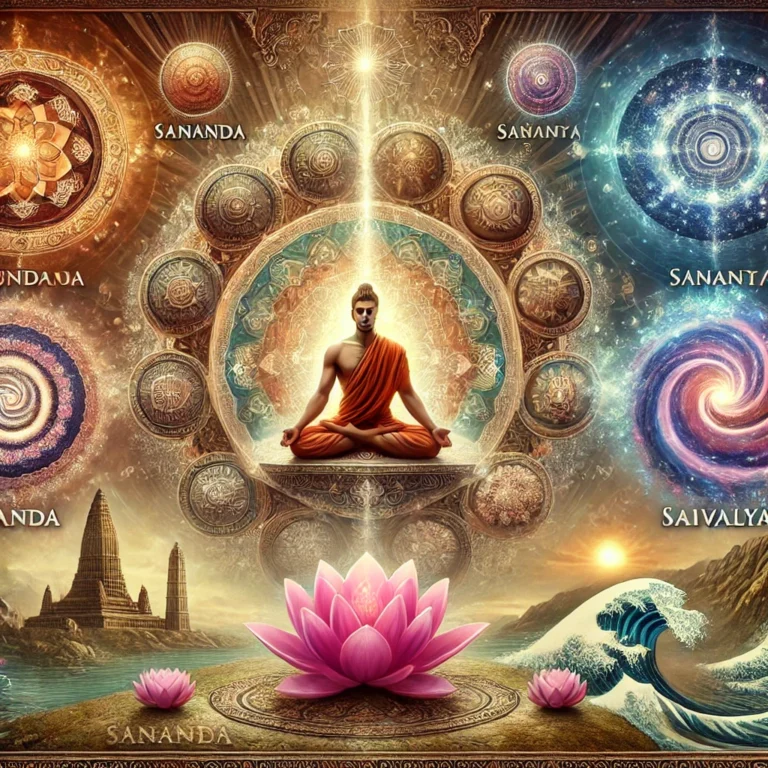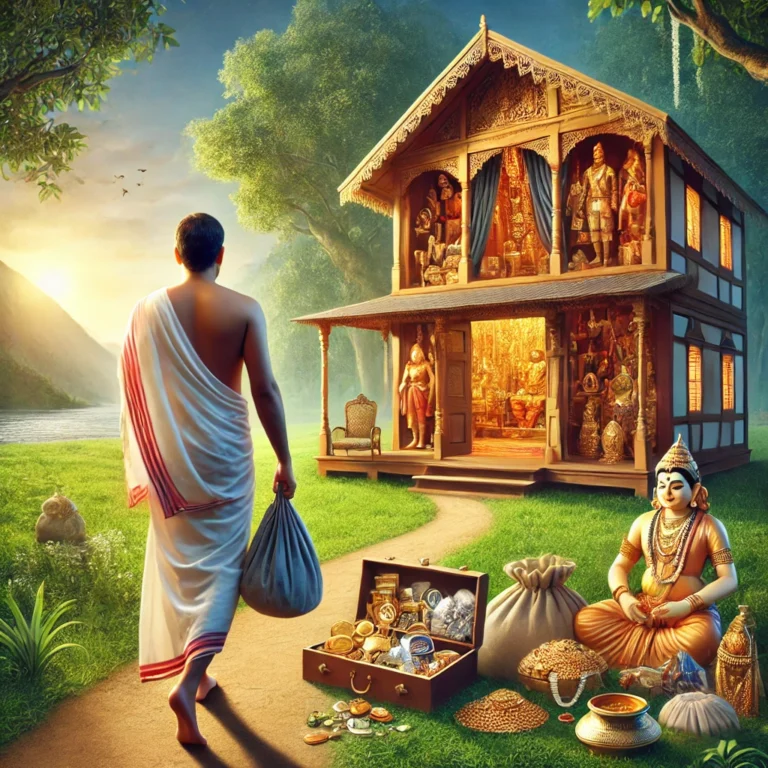Patanjali Yoga Sutra Glossary: Understanding Yoga Sutra Terms-I
Part 22: Patanjali Yoga Sutra Explained – Companion Guide
Your Roadmap to Asamprajnata Samadhi
Have you ever started reading a profound spiritual text, only to find yourself lost in a maze of Sanskrit terms? You’re not alone. The teachings of Yoga Sutras 1.18-1.19—which explore the highest states of consciousness and the paths beyond death—are among the most transformative in all of Yoga philosophy. But they’re also dense with technical terminology.
This glossary is your key to unlocking these teachings.
The Challenge: Terms like “Nirbija Samadhi,” “Ekaagrata Samskara,” “Mahat-tattva,” and “Trigunatmaka” can make your eyes glaze over.
The Solution: Clear, concise definitions with embedded links to deeper resources.
The Promise: After reviewing these 36 essential terms, the profound teachings of Videha, Prakriti-laya, and the three paths to liberation will open like a lotus flower.
How to Use This Glossary
Before Reading the Main Blog
Spend 10-15 minutes scanning these definitions. You don’t need to memorize them—simply building familiarity makes a huge difference.
During Reading
Keep this page open in another tab. When you encounter an unfamiliar term in the main teaching, quickly reference it here without losing your flow.
After Reading
Return here to deepen understanding. Now that you’ve seen the terms in context, the definitions will be richer and more meaningful.
For Deep Study
Notice how terms interconnect: how samskaras relate to kleshas, how gunas manifest in different samadhi states, how Sankhya metaphysics explains the stages.
Ready? Let’s begin.
Part 1: 12 Samadhi Terms
Understanding the different types and stages of Samadhi is foundational to grasping why even sublime states can become bondage.
1. Samadhi (समाधि)
The state of complete absorption where the mind becomes one-pointed and still. The ultimate goal of Yoga practice where mental modifications cease and consciousness rests in its true nature. Divided into two major categories: Samprajnata (with cognition) and Asamprajnata (without cognition). In Buddhism, it is the last of the eight elements of the Noble Eightfold Path.
📖 Learn More: Wikipedia: Samadhi | Stages of Samadhi According to Ashtanga Yoga
2. Samprajnata Samadhi (सम्प्रज्ञात समाधि)
Cognitive absorption where awareness remains of the object of meditation and the meditator. Also called Sabija (with seed) Samadhi because subtle impressions and objects of focus remain. Comprises four progressive stages: vitarka (deliberation), vicara (reflection), ānanda (ecstasy), and asmitā (a sense of ‘I’-ness). This is the first level of Samadhi as it involves sustained concentration on an object.
📖 Learn More: VedicFeed: Different Stages of Samadhi | Fitsri: Samadhi Explained
3. Asamprajnata Samadhi (असम्प्रज्ञात समाधि)
Non-cognitive absorption where all mental modifications cease completely. Also called Nirbija (seedless) Samadhi because no seeds of future mental activity remain. Only impressions of cessation (nirodha samskaras) persist. This leads directly to Kaivalya (liberation). The meditator and the world lose their connection, and the meditator deepens their relationship with the self.
📖 Learn More: Yoga Pradipika: Types of Samadhi
4. Sabija Samadhi (सबीज समाधि)
“With-seed” Samadhi—another name for Samprajnata Samadhi. Called “with seed” because subtle mental impressions (bija) remain that can sprout into future thoughts, experiences, or even rebirths. Samskaras (past seeds of karma) are not destroyed. In some way or other, we are still entangled in the bondage of karma even when in this samadhi. The object of meditation and subtle cognitive function persist.
5. Nirbija Samadhi (निर्बीज समाधि)
“Seedless” Samadhi—another name for Asamprajnata Samadhi. Called “seedless” because all seeds (bija) of bondage, karma, and future mental modifications have been completely burned. No potential for future manifestation remains. The puruṣa becomes purely self-aware. It is no longer aware of Prakṛti because there are no objects to retain its awareness. This is the gateway to absolute liberation.
📖 Learn More: Serpentine Yoga: Stages of Samadhi in Meditation
6. Vitarka Samadhi (वितर्क समाधि)
The first stage of Samprajnata Samadhi focused on gross objects. Involves reasoning and reflection (vitarka) about physical forms, elements, or tangible objects. The stage of struggle, where the person is connected to the physical world yet wants to reach the world of the Ultimate. The mind achieves one-pointed focus on the gross material realm while retaining analytical awareness.
📖 Learn More: Leigha Butler Yoga: 4 Levels of Awakening
7. Vichara Samadhi (विचार समाधि)
The second stage of Samprajnata Samadhi focused on subtle objects. Involves contemplation (vichara) of abstract principles, tanmatras (subtle elements), time, space, or subtle energies. Time loses all linear human perspective, and becomes in tune with the space-time of the universe. The mind transcends gross forms to perceive the subtle fabric underlying physical reality.
📖 Learn More: Dr. Tapan: Samadhi Explained
8. Ananda Samadhi (आनन्द समाधि)
The third stage of Samprajnata Samadhi characterized by profound bliss. Arises through contact between the focused mind and our spiritual nature. Arises from awareness of Ahamkara (ego-principle) without its distorting effects. The experience is one of boundless, infinite joy beyond any worldly pleasure. Warning: This blissful absorption can become a subtle trap (as we’ll see in Videha state).
📖 Learn More: Easy Ayurveda: Samadhi Meaning and Types
9. Asmita Samadhi (अस्मिता समाधि)
The fourth and highest stage of Samprajnata Samadhi resting in pure I-am-ness. Consciousness experiences itself as infinite, unbounded existence without any object. The sense is simply “I AM” without ego-distortion, yet this is a changeless sense of ‘I am’ (अस्मि Asmi = I am) which is still a mental modification reflecting Purusha in Chitta.
10. Viveka-khyati (विवेक-ख्याति)
Discriminative wisdom that clearly perceives the absolute distinction between Purusha (pure consciousness) and Prakriti (material nature including mind). The culmination of Samprajnata Samadhi where the yogi directly sees that consciousness and mind-stuff are fundamentally different categories. This wisdom destroys all kleshas. Yet even this must be transcended through Para Vairagya for Asamprajnata Samadhi.
11. Nirodha (निरोध)
Complete cessation or restraint of all mental modifications (vrittis). The defining characteristic of Yoga according to Sutra 1.2: “Yogash chitta-vritti-nirodhah.” In Asamprajnata Samadhi, nirodha is complete—no thoughts, perceptions, or cognitive activity remain, only the impressions of cessation itself. When concentration (dharana) is continuous, with no flicker of interruption, nirodha deepens.
12. Samskara-shesha (संस्कार-शेष)
“Remainder of impressions”—the defining characteristic of Asamprajnata Samadhi. When all active mental modifications cease, only the latent impressions (samskaras) created by the practice of cessation remain. These nirodha samskaras are the final residue before complete dissolution into Kaivalya.
Part 2: 10 Samskara/Klesha Terms
Understanding how mental impressions perpetuate or destroy each other is key to grasping the path to liberation.
13. Samskara (संस्कार)
Subtle mental impressions or latent tendencies created by thoughts, actions, and experiences. Like grooves etched into consciousness, samskaras influence future thoughts and behaviors. They exist in four categories: vyutthana (ordinary), samadhi-prarambha (beginning meditation), ekaagrata (one-pointed), and nirodha (cessation). Each higher type progressively neutralizes the lower.
14. Vyutthana Samskara (व्युत्थान संस्कार)
Impressions of ordinary scattered mental activity characterized by distraction, restlessness, and worldly engagement. Result from Tamas and Rajas predominance. The outward flowing of the mind when thoughts, attachments, desires, and memories about the outside world become active again. These keep consciousness in normal waking states with all its concerns. The first category to be neutralized.
📖 Learn More: Yoga International: Stages of Samadhi
15. Samadhi-prarambha Samskara (समाधि-प्रारम्भ संस्कार)
Impressions formed during the beginning stages of concentration and meditation practice. Result from increasing Sattva guna. Lead to initial meditative states and moments of clarity. These impressions gradually overpower and destroy vyutthana samskaras through consistent practice.
16. Ekaagrata Samskara (एकाग्रता संस्कार)
Impressions of one-pointed concentration and sustained deep meditation. Result from Sattva predominance. Create and maintain all stages of Samprajnata Samadhi. These powerful impressions keep the mind absorbed in meditation objects but must themselves eventually be transcended for Asamprajnata.
17. Nirodha Samskara (निरोध संस्कार)
Impressions of complete cessation created exclusively through the practice of Para Vairagya. These unique impressions progressively destroy ekaagrata samskaras and lead to Asamprajnata Samadhi. Eventually, they destroy even themselves like lead burning away after purifying gold, leaving only Kaivalya.
18. Klesha (क्लेश)
Afflictions or sources of suffering that bind consciousness to the cycle of birth and death. Five primary kleshas exist: Avidya (ignorance), Asmita (ego), Raga (attachment), Dvesha (aversion), and Abhinivesha (fear of death). All kleshas arise from the root klesha of Avidya. Kleshas are depicted as a tree with Avidya being the trunk, the branches being Asmita & the three sprouts being Raga, Dvesha and Abhinivesha.
📖 Learn More: Integral Yoga Magazine: Five Kleshas | The Yoga Institute: 5 Kleshas
19. Avidya (अविद्या)
Fundamental ignorance—the root klesha from which all others arise. Avidya translates literally as not-knowing (a = not + vid = to know). The misidentification of the eternal with the temporary, pure with impure, pleasure with pain, and Self with not-Self. Exists as a seed in trace Tamas even in highly sattvic consciousness until Viveka-khyati burns it.
📖 Learn More: Hridaya Yoga: Kleshas – The 5 Fundamental Causes | Tripura Shakti: Avidya in Yoga Meditation
20. Asmita-klesha (अस्मिता-क्लेश)
Ego-affliction or the sense of separate individual selfhood. The apparent identification of the powers of vision (the instruments of knowledge – sense organs and mind) with the Seer (the Supreme Self, the Witness Consciousness). Different from Asmita Samadhi (I-am-ness). There is often confusion between asmita and ahamkara—ahamkara is the I-maker that builds self-identity. This klesha is the direct cause of Raga, Dvesha, and Abhinivesha.
📖 Learn More: Inspiring Actions: Klesha #2 – Asmita | Keen on Yoga: The 5 Kleshas
21. Dagdha-bija (दग्ध-बीज)
“Burnt seeds”—the state of kleshas after being destroyed by Viveka-khyati. Like seeds roasted in fire that can never sprout, burnt kleshas retain their form but lose all potency to generate future suffering or rebirth. They exist as inert traces without power.
22. Prakritika Bandha (प्राकृतिक बन्ध)
“Natural bondage”—the subtle attachment to Prakriti (material nature) that persists even in highly advanced states like Videha and Prakriti-laya. Though free from gross and subtle modifications, attachment to Ahamkara or Asmita keeps the yogi bound to nature. Only Kaivalya transcends this. The Tattvasamasa describes this as the yogi being “submerged” and must eventually “rise” again.
Part 3: 14 Sankhya Terms
The Sankhya philosophical framework underlies all of Patanjali’s Yoga. Understanding these metaphysical categories is essential.
23. Purusha (पुरुष)
Pure consciousness or the eternal witness—the true Self utterly distinct from material nature. Changeless, beyond qualities (gunas), self-luminous awareness that illuminates but is never affected by Prakriti. It is absolute, independent, free, beyond perception, above any experience by mind or senses, and impossible to describe in words. The goal of Yoga is to establish Purusha in its own nature (svarupa-avasthiti).
📖 Learn More: Wikipedia: Samkhya | Yin Yoga: Purusha & Prakriti
24. Prakriti (प्रकृति)
Primordial material nature composed of three gunas in equilibrium. The source of all manifestation including mind, senses, elements, and physical forms. Prakriti is active, unconscious, and is a balance of the three guṇas (qualities or innate tendencies), namely Sattva, Rajas, and Tamas. Prakriti is inert (jada) and unconscious but appears conscious when reflecting Purusha. Liberation occurs when Purusha recognizes its complete distinction from Prakriti.
📖 Learn More: Wikipedia: Prakriti | Padmabuja: Sankhya – Purusha, Prakriti and the 25 Tattvas
25. Guna (गुण)
The three fundamental qualities or strands that constitute all of Prakriti: Sattva (preservation/goodness/light/harmony), Rajas (creation/energy/activity/passion), and Tamas (destruction/inertia/darkness/ignorance). Everything in manifestation is a unique combination of these three gunas in constant flux and transformation. Gunas aren’t really qualities or attributes, they are constituents. Prakriti is a three-strand rope.
📖 Learn More: Digital Plus 24×7: Purusha and Prakriti
26. Sattva (सत्त्व)
The guna of clarity, harmony, lightness. When sattva predominates cognition becomes clear and calm. Associated with knowledge, peace, harmony, and upward movement. Predominant in refined meditation states, wisdom, and spiritual understanding. Though superior to Rajas and Tamas, even Sattva must be transcended for liberation as it’s still Prakriti.
27. Rajas (रजस्)
The guna of activity, desire, movement. Rajas drives change, will and attachment. Associated with movement, change, ambition, and turbulence. Creates attachment to action and its fruits. Predominant in ordinary waking consciousness, worldly pursuits, and emotional reactivity. Must be calmed through practice for meditation to deepen.
28. Tamas (तमस्)
The guna of inertia, dullness, resistance. Tamas grounds or obscures experience. Associated with dullness, sleep, confusion, and obstruction. Veils knowledge and prevents spiritual progress. However, trace Tamas serves as the substrate where Avidya exists, and paradoxically can support Sattva after kleshas are burned.
📖 Learn More: Britannica: Samkhya
29. Chitta (चित्त)
The mind-stuff or inner instrument composed of the three gunas. Includes Manas (sensory mind), Buddhi (intellect), and Ahamkara (ego-sense). Though inert material substance (jada), Chitta appears conscious when reflecting Purusha like a mirror. All mental modifications (vrittis) are transformations of Chitta.
30. Mahat-tattva (महत्-तत्त्व)
“The great principle” or cosmic intelligence—the first unequal transformation of Prakriti’s gunas. Also called primordial Buddhi or universal mind. The Prakriti-laya yogis merge into this highest material principle, which the commentary identifies as the actual functional Prakriti (as opposed to theoretical equilibrium Prakriti). Out of this is evolved buddhi (“spiritual awareness”).
📖 Learn More: Swami J: Prakriti and its Evolutes
31. Ahamkara (अहङ्कार)
The ego-principle or I-making faculty that creates the sense of individual selfhood. Next to evolve is the individualized ego consciousness (ahamkara, “I-consciousness”). The function that appropriates experiences as “mine” and creates identification with body-mind. Not inherently negative but becomes problematic when mistaking itself for Purusha. Videha yogis remain subtly attached to refined Ahamkara.
32. Tanmatra (तन्मात्र)
The five subtle elements or sense-potentials that are the essences of the five gross elements (earth, water, fire, air, space). These are shabda (sound), sparsha (touch), rupa (form), rasa (taste), and gandha (smell). Objects of perception in Vichara Samadhi. More subtle than gross physical elements but grosser than the causal principles.
33. Vikriti (विकृति)
The sixteen modifications or evolutes of Prakriti: the five sense organs (jnanendriyas), five action organs (karmendriyas), the sensory mind (manas), and five subtle elements (tanmatras). Videha and Prakriti-laya yogis transcend these sixteen modifications but not the root causes (Ahamkara or Asmita).
34. Karana (कारण)
Cause or causal state—particularly referring to Asmita-Prakriti or Mahat-tattva as the cause into which effects dissolve. The commentary uses “karana-laya” (dissolution in the cause) to describe Prakriti-laya state where consciousness merges into the causal principle but must eventually “rise” again for full liberation.
35. Gunatita (गुणातीत)
“Beyond the gunas”—describes Purusha’s transcendent nature. Pure consciousness is utterly untouched by Sattva, Rajas, or Tamas. This is contrasted with Trigunatmaka (composed of three gunas) which describes all of Prakriti including Chitta. Viveka-khyati perceives this absolute distinction.
36. Trigunatmaka (त्रिगुणात्मक)
“Having the nature of three gunas”—describes all of Prakriti including the mind (Chitta). Everything material, from gross elements to subtle thoughts, is a unique configuration of Sattva, Rajas, and Tamas. Viveka-khyati sees that Chitta is trigunatmaka while Purusha is gunatita.
Visual Concept Maps



Why These Definition of Terms Matter
Without understanding this technical vocabulary, the profound teachings of Sutras 1.18-1.19 remain abstract or inaccessible. With this foundation:
✅ You’ll grasp WHY even Ananda and Asmita can become bondage
✅ You’ll understand HOW samskaras progressively destroy each other
✅ You’ll see the MECHANISM by which Viveka-khyati liberates
✅ You’ll comprehend the DIFFERENCE between Samprajnata and Asamprajnata
✅ You’ll recognize the SANKHYA FRAMEWORK underlying all Yoga practice
Learning Tips for Maximum Retention
1. Create Flashcards
Use the Sanskrit term on one side, definition on the other. Review daily.
2. Draw the Maps
Hand-draw the four visual concept maps above. The act of drawing creates neural pathways.
3. Teach Someone Else
Explain 3-5 terms to a friend. Teaching is the best way to solidify understanding.
4. Use in Meditation
When meditating, note which samskara type is active. “Ah, vyutthana samskaras pulling me outward.”
5. Connect to Experience
When you feel blissful in meditation, recognize: “This might be touching Ananda Samadhi territory.”
Quick Self-Test
Can you answer these without looking?
- What’s the fundamental difference between Samprajnata and Asamprajnata?
- Why are they called “Sabija” and “Nirbija”?
- Which klesha is the root of all others?
- What are the three gunas?
- What distinguishes Purusha from Prakriti?
Ready to Continue Your Journey?
Now that you have this essential vocabulary, you’re fully prepared to dive into the main teaching:
📖 Main Teaching
Beyond Liberation: Videha, Prakriti-laya & Three Paths of Freedom
Discover the hidden traps of spiritual attainment and the three authentic paths to ultimate liberation.
The technical terms will now illuminate rather than obscure the path.
Related Yoga Sutra Blogs
Deepen your understanding with these connected teachings:


Feature Image: Click here to view the image.
#Yoga #Samadhi #Meditation #Patanjali #HinduinfoPedia#PatanjaliYogaSutraExplained
References
Patanjali Yoga Sutra By Swami Vivekananda
Yoga-sutras (with Vyasa and Vachaspati Mishra)
Patanjali Yogapradeep by Gita Press Gorakhpur Archive.org
Youtube
Related Blogs
- Vedic science and its legacy
- Hindu Sacred Texts: The Building Blocks of Hinduism
- Yoga Day and Ashtanga Yoga In Hindu Philosophy
- Patanjali and His Ashtanga Yoga
- Patanjali Yoga Sutras: Understanding “Atha Yoganushasanam”
- Patanjalis yoga sutra: Understanding Yogashchittavrittinirodhah
- Yoga Learning: Unraveling ‘Yogashchittavrittinirodhah’
- Yoga Rupe Vritti – Managing Mind Modifications through Yoga
- Yoga and Vritti Types: Navigating Mental Modifications
- Yoga Sutras’ Five Vrittis: Mastering Mind Through Ancient Wisdom
- Yoga Sutras’ Pramana Vritti: Exploring Sources of True Knowledge
- Yoga Sutras’ Viparyaya Vritti: Misconceptions and Clarity
- Yoga Sutras’ Vikalpa Vritti: Unraveling Mind’s Illusions
- Yoga Sutras’ Sleep Vritti: Unveiling the Depths of Conscious Rest
- Yoga Sutras’ Memory Vritti: Unraveling the Threads of Recall
- Yoga Sutra Practice Non-Attachment: Mastering Mind and Embracing Tranquility
- Yoga Vritti Restraint Method: Mastering Mindful Discipline
- Yoga Long Term Discipline: Mastering the Art of Sustained Practice
- Yoga Renunciation of Desires: A Path to Inner Peace
- Yoga Beyond Gunas Attachment: Unlocking the Secrets of Sutra
- Samadhi Stages Unfolded: Samadhi Practice- Yoga Sutra 1.17
- https://hinduinfopedia.org/beyond-cognitive-samadhi-understanding-asamprajnata-samadhi/
- https://hinduinfopedia.org/practice-of-para-vairagya-yoga-sutra/
Follow us:
- English YouTube: https://www.youtube.com/@Hinduofficialstation
- Hindi YouTube: https://www.youtube.com/@HinduinfopediaIn
- X: https://x.com/HinduInfopedia
- Instagram: https://www.instagram.com/hinduinfopedia/
- Facebook: https://www.facebook.com/Hinduinfopediaofficial
- Threads: https://www.threads.com/@hinduinfopedia






Leave a Reply